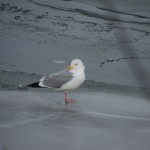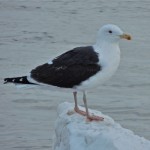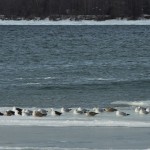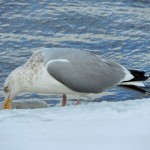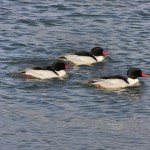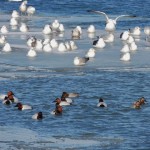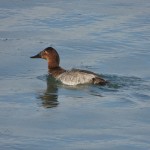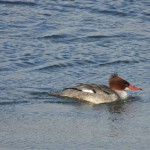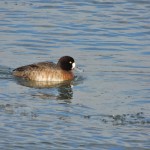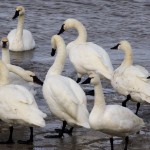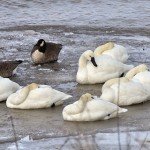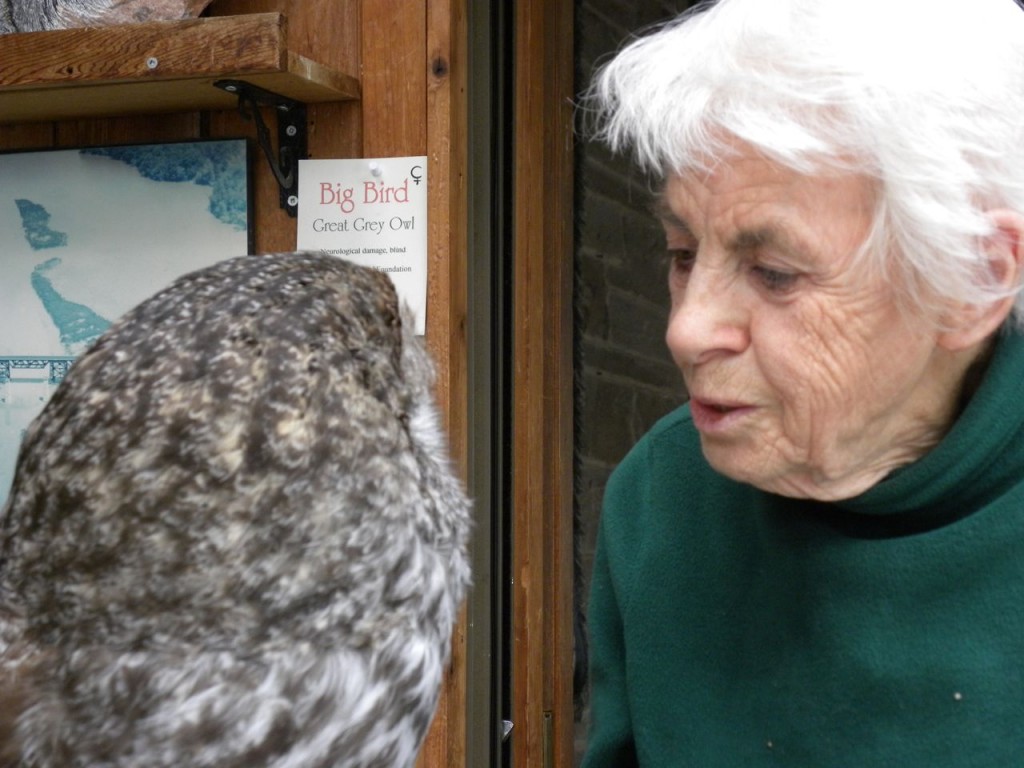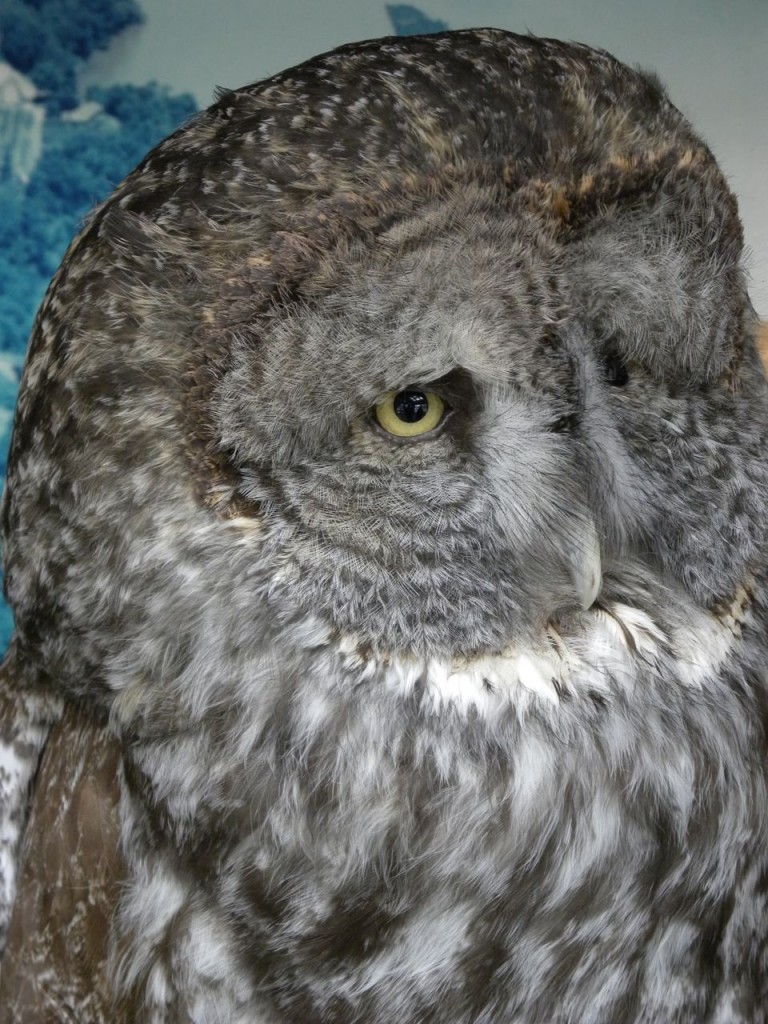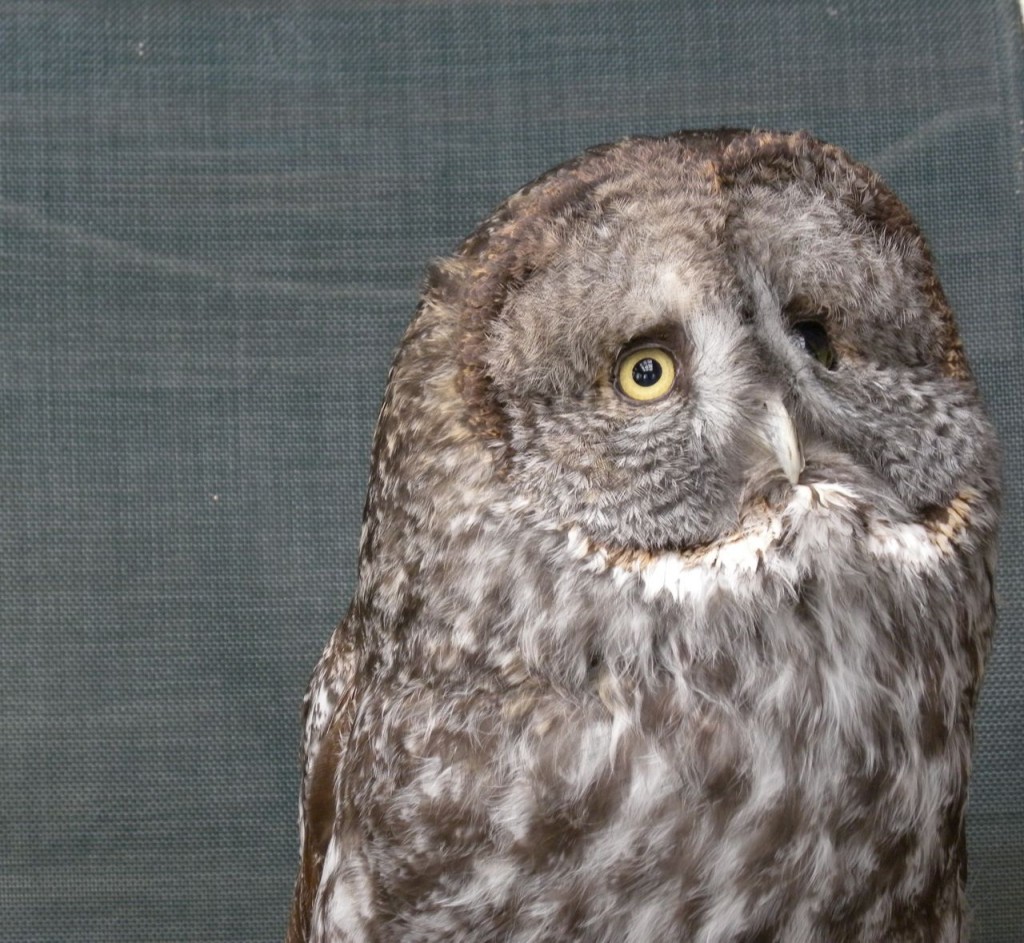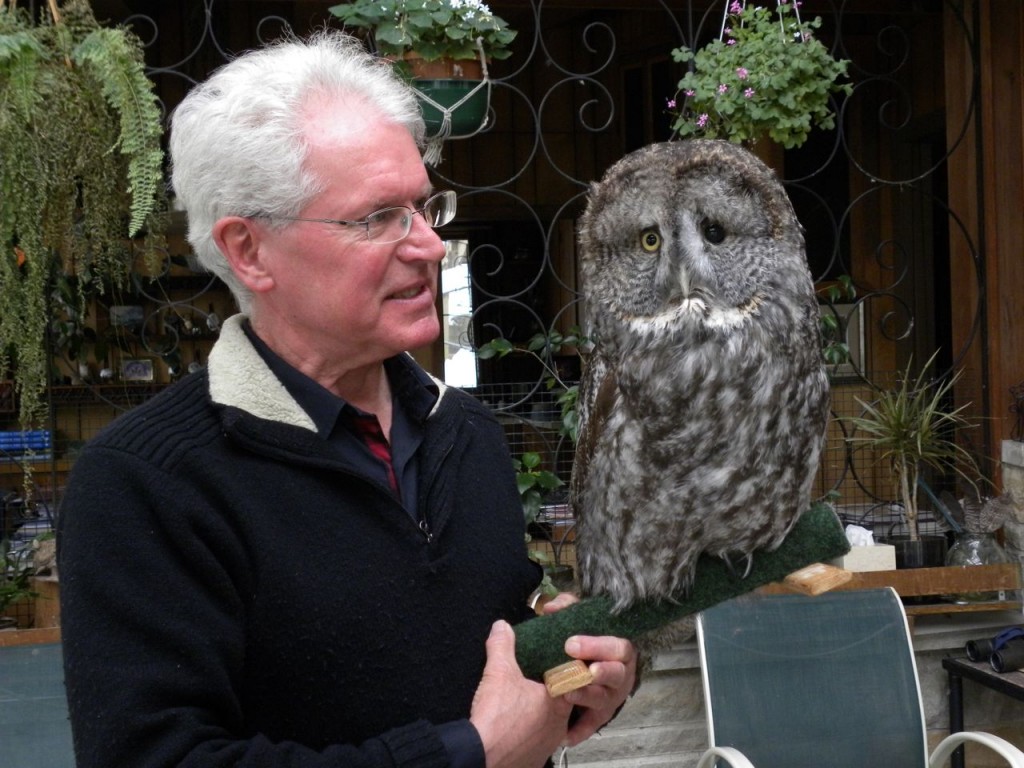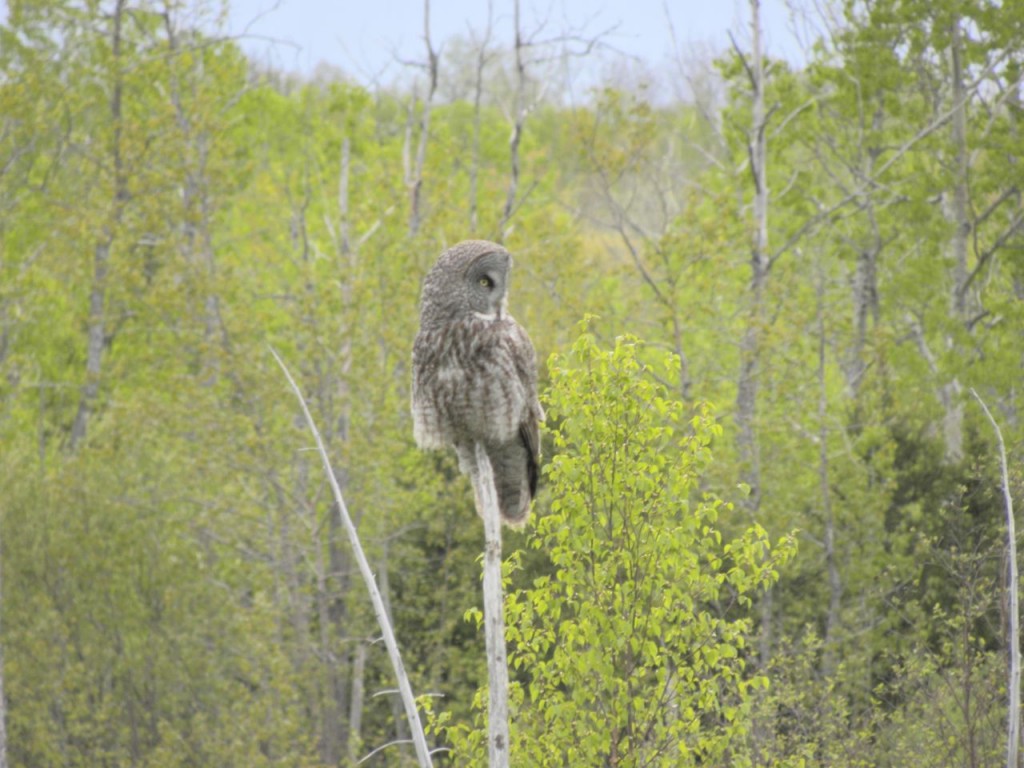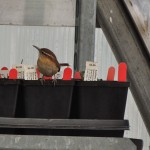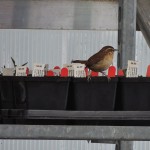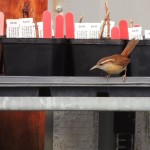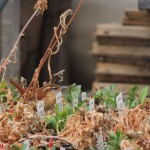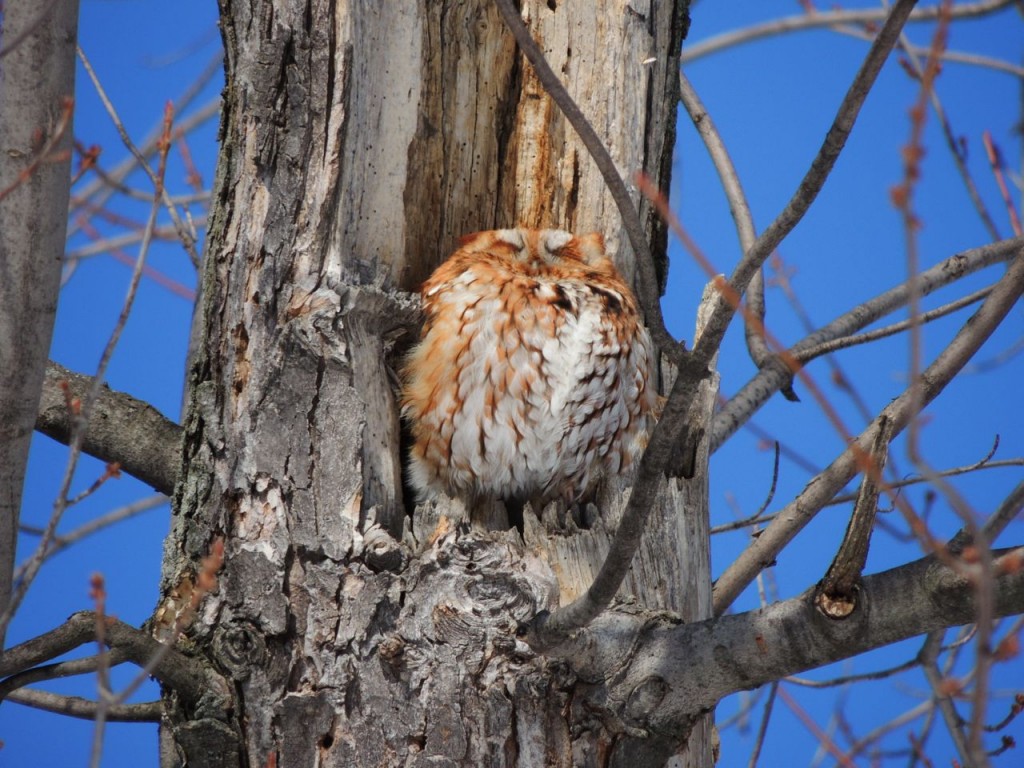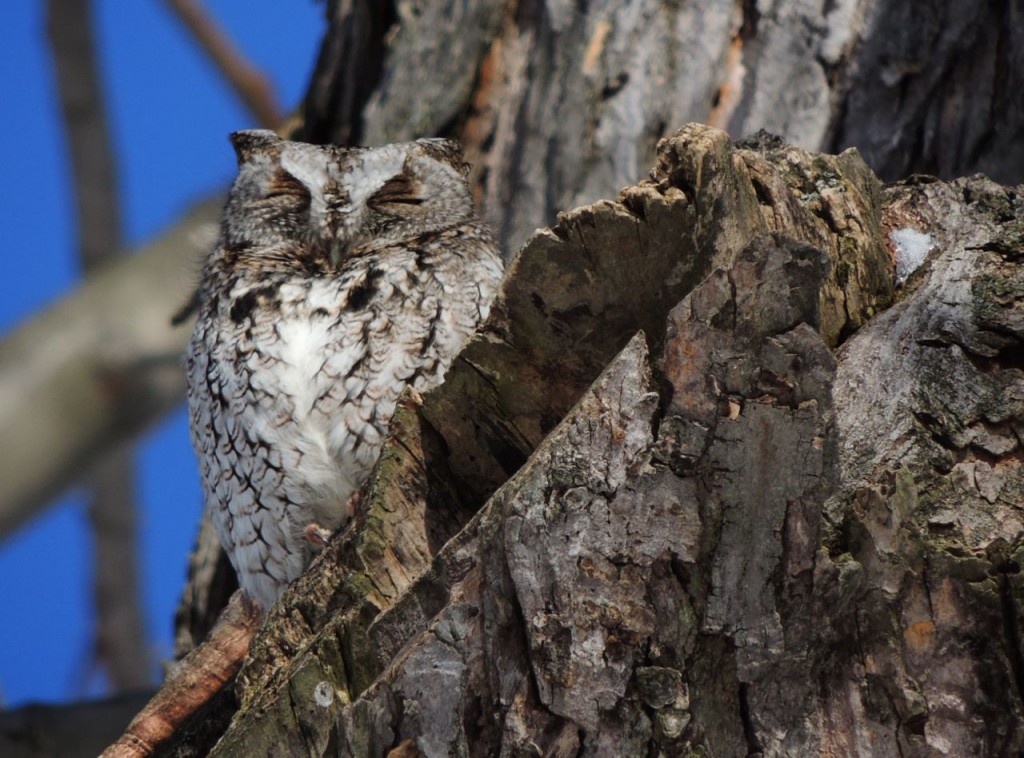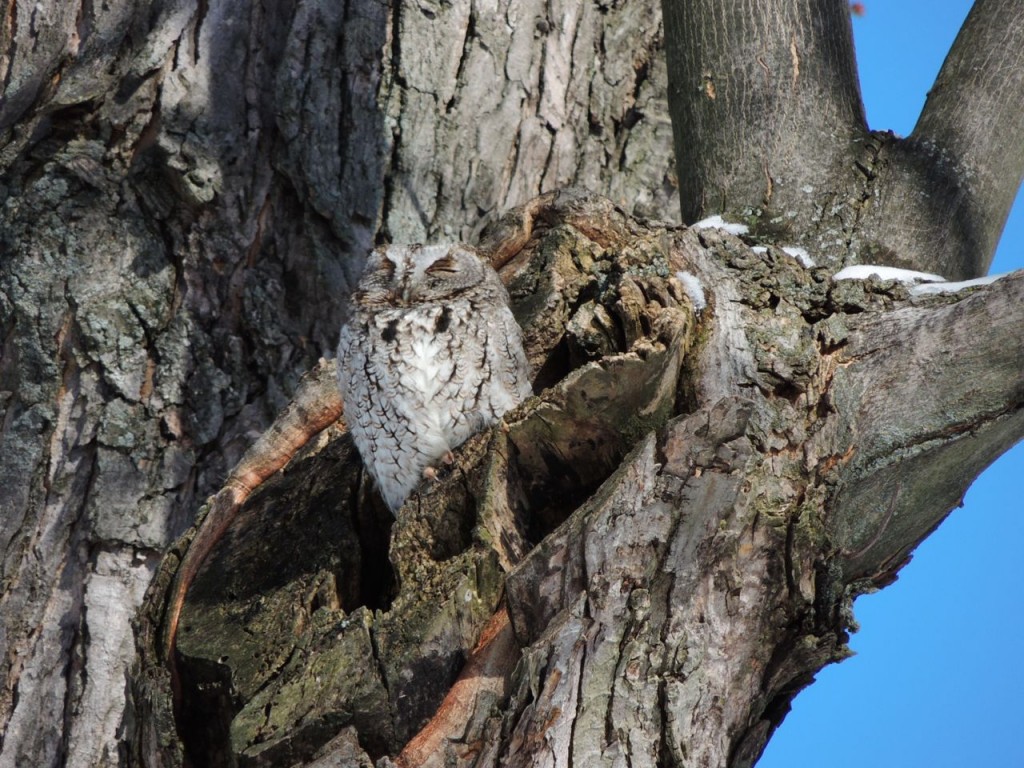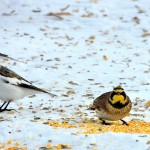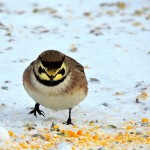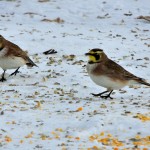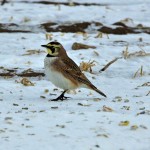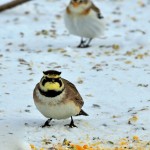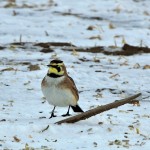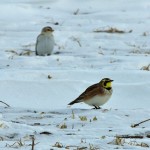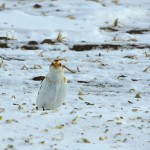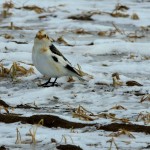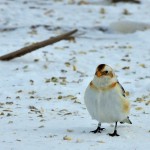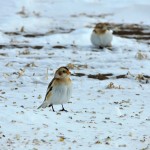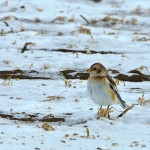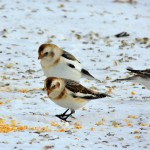26 February 2014. Niagara River, Ontario. A year ago I drove the length of the Niagara River to see what species of waterfowl (ducks, geese and swans) were spending the winter there. It was a rewarding trip, so I repeated it today, partly just to get out birding and partly for the sake of comparison (and a re-read of last year’s post shows how much alike the two expeditions were).
The Niagara River is some river, more like a fast-running sluiceway connecting Lake Erie with Lake Ontario. The latter is about 300 feet lower than the former and the spectacular drop over Niagara Falls needs no introduction. It gives me the chills to think about the risks associated with venturing into or onto the river, it rushes rather than flows from one lake to the other. Today, as if to emphasize its malevolent potential, it carried bright, white ice floes along with it.
My Bird of the Day, a Glaucous Gull, came right at the start. I was looking at the expanse of river right in front of me and mentally checking off: Red-breasted Merganser, Greater Scaup and Great Black-backed Gull, when one of the shoreline gulls took off and flew lazily away, circling in a wide arc. I noted its pink feet, thinking how much they look like those of a Great Black-backed Gull, when I suddenly realized that I was looking at a gull with pure white wings; a bird that could only be a Glaucous or an Iceland Gull. Both are winter visitors to the Great Lakes but the Glaucous is somewhat commoner, quite large and, if anything, purer white. The bird I watched was larger than a Herring Gull and close to the size of a Great Black-backed. I know I’ve seen Glaucous Gulls before but not often, being a bit of a fair weather birder. Anyway it was a nice surprise, a bit of a treat really, and I immediately put an asterisk beside it in my notebook.
The rest of my drive was as expected: where the river flowed fastest, Greater Scaup and Red-breasted Mergansers dominated. In quieter stretches, particularly hugging the shore, were hundreds of Canvasbacks, Common Goldeneyes and Common Mergansers. And scattered here and there: Redheads, Mute Swans, Long-tailed Ducks and one, just one, Hooded Merganser. Along one short stretch of the shore was a straggling flotilla of perhaps two hundred Tundra Swans. And everywhere: Great Black-backed, Herring and a few Ring-billed Gulls, just loafing on ice whiling away the winter.
Here are a couple of galleries of some of today’s birds, click to enlarge.
As I drove close to the falls I could see massive curtains of ice obscuring the face of the cascading water; it really is a spectacle at any time of year.
This post contains photos in galleries visible only on the website, not if you’re reading this as an email.
